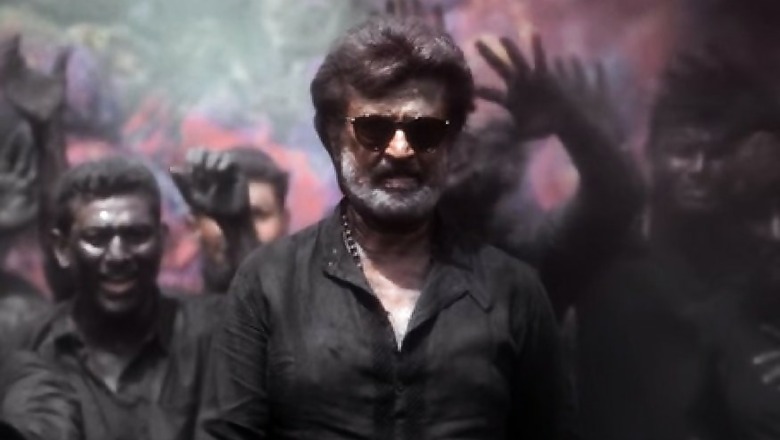
views
*Spoiler Alert*
Unlike the usual buzz (fans screaming their lungs out, pouring milk over larger than life Rajinikanth cut outs), Kaala hit the theatres on a silent Thursday. Everyone was surprised by the low-key publicity by the producers. But maybe it was their plan all along, considering the subject of the film.
“This film, the politics being talked about in the film is very important,” said Director Pa Ranjith during the audio launch of the film. Rajini reiterated that Kaala is not a political film, but has political messages. True to Rajini’s word, Kaala is full of political messages and a handful of anti-establishment barbs.
The first thing that is striking is the animation sequence after the title card rolls. It depicts the importance of land since the beginning of times and how people are stripped off their rights over land & and politics involved in this process. This 40 second sequence sets the backdrop for the issues the film tackles.
The film is all about the politics that surrounds land, and the lives of those living in slums. We have seen how slum-dwelling people have been forced to relocate to other places due to urbanisation. A relatable example is that of the Commonwealth Games in Delhi. There were reports that people residing in that area were stripped of their land and forced to move to other places. Ranjith has highlighted the politics surround land issues and how people are alienated when stripped off their land.
While this is not a new concept in Indian films, what Ranjith does is use a powerful voice such as Rajinikanth to tell the story of the oppressed and how the concept of 'beautifying' cities leads to a loss of livelihood for the urban poor. In Kabali, and similarly in Kaala Ranjith has coded Dalit symbolism into the struggle for Tamil people's rights. At this juncture where Rajinikanth is grabbing eyeballs in the political spectrum, Kaala pitches Rajinikanth as a leader who is subaltern and also a Tamil.
Another aspect the film highlights is that of protests, which is particularly significant in the case of Tamil Nadu. Director Ranjith has included sequences which mimic the 'Jallikattu' protest. He also highlights how a peaceful protest turns violent and how government and police play their part in this. The film has sequences where a protest led by Rajini turns violent due to some 'anti-social elements, which is then exploited by the police. (Similar to what happened in the Jallikattu/Anti-sterlite agitation).
Talking about anti-establishment barbs, the film portrays the gross misuse of Section 144 by the government and police officials. One can relate these sequences to the violent anti-sterlite protest in Tuticorin and how there were reports of police officials targeting protestors.
The film makes use of a word that has been used time and again in Indian politics: 'anti-national'. The word is used by Nana Patekar who essays the role of a wily politician. One can connect the character and the use of this controversial word to contemporary Indian politics and leaders. With words like 'Digital Dharavi', 'Clean Mumbai', ''Pure Mumbai', Ranjith has made some other important political references in the film.
"So you are Kaala. I haven't seen you before," Haridada (essayed by Nana Patekar) tells Rajinikanth. Rajini replies saying "But I have seen you everywhere. All around the city." This is a direct jibe at politicians making use of government funds to publicise themselves using banners, advertisements etc.
Another concept the film tackles is that of black(dirt) vs white (pure). In one particular sequence, Nana Patekar visits Kaala's home and is offered water. He however refuses to take it. To which one of the character says 'Look at him. He is donned in white. But what use when he is not even drinking water from our house'. In using these concepts, Ranjith highlights the notion of 'pure' and 'impure' that still exists in some areas of the country.
Even though the film was shot way before the anti-sterlite agitation in Tuticorin, it fits perfectly into what unfolded in the district and the reasons for the unrest. In short, Ranjith has made perfect use of this film to convey to the audience the struggle of those alienated from their land. To an extent, the film also establishes a link between real and reel life Rajini who is on the verge of launching his political party.
This film is very important in a politically sensitive state like Tamil Nadu and it might lead to some leaders expressing their disappointment over the issues and the way they have been portrayed. What remains to be seen however is whether this film will impact Rajini's political career. Stay tuned to find out


















Comments
0 comment